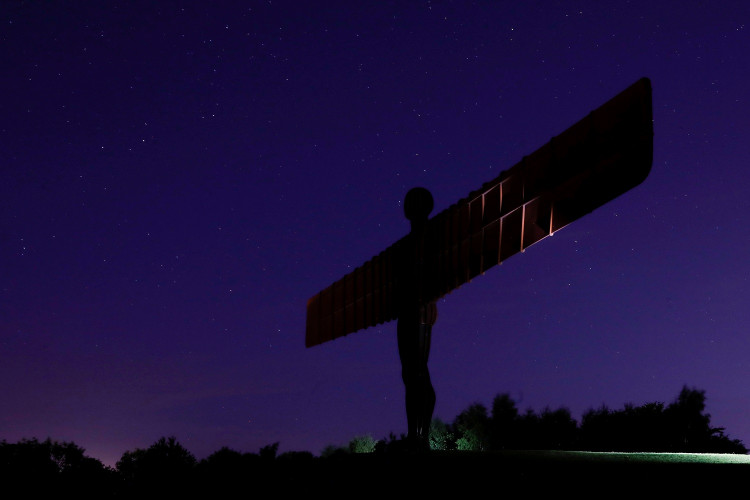New moons arise as the sun and moon meet the same longitude, a phenomenon also called a conjunction. Last month, the new moon coincided with a total solar eclipse (at least if you were in South America), but that's not going to happen this week because the moon would "miss" the sun as it moves through the sky.
The new moon of January will take place at 12 a.m. EST (0400 GMT) Wednesday, Jan. 13. A day after, our natural satellite will make a near approach to Mercury, and while the great conjunction of Jupiter and Saturn has passed, the two planets are still close together in the sky and will make a close assemblage with Mercury only after sunset before all three sink below the horizon.
So, this time we just get a dark sky - you can't see the moon from Earth because the illuminated side is facing away from you.
On the evening of the new moon, Jan. 12, the sun sets at 4:50 p.m. local time in New York City. When it sets, Jupiter, Saturn, and Mercury will all become visible as the horizon darkens, making a rough line in the southwest from left to right, with Mercury farthest left, then Jupiter, then Saturn. At 5 p.m. Mercury would be the largest of the three, 8 degrees above the horizon. According to Heavens-Above.com estimates, Jupiter is about 7 degrees and Saturn is about 5 degrees.
The three planets will all extend about three degrees in azimuth (horizontal direction)-that is, the distance between Mercury and Saturn will be about six lunar diameters. Catching the three would need favorable weather and a flat horizon, but all three are bright enough to be visible until Saturn sets at 5:33 p.m. local time in New York City.
If you live farther south, viewing the three planets together is a little easier; the angle the planets' orbits make with the horizon is a bit steeper.
Mercury is usually a hard planet to view since it's close to the sun, and though it's bright, it's usually hard to pick up in the first minutes after sunset against the sky. But this time, the young moon would make it easier to spot, when it passes 2 degrees south of Mercury on Jan. 14, according to In-The-Sky.org.
This conjunction will not be visible from New York as it happens at 3:14 a.m. East, but after sunset, the thin crescent moon would still be just east of Mercury, making it an easy signpost to the planet. If you want to witness the real moment of conjunction, you ought to be in East Asia-it happens at 5:14 p.m. in Tokyo, where the sun sets at 4:50 p.m. on the 14th of January.






